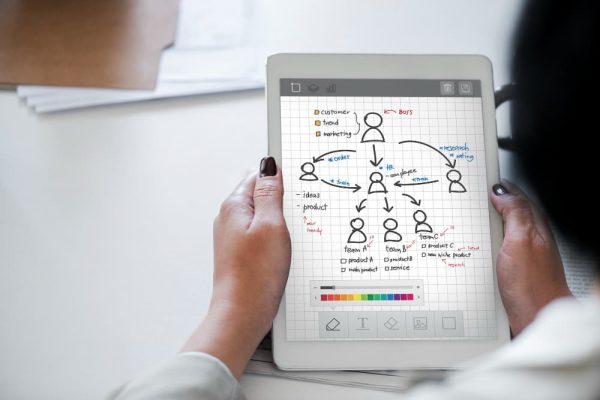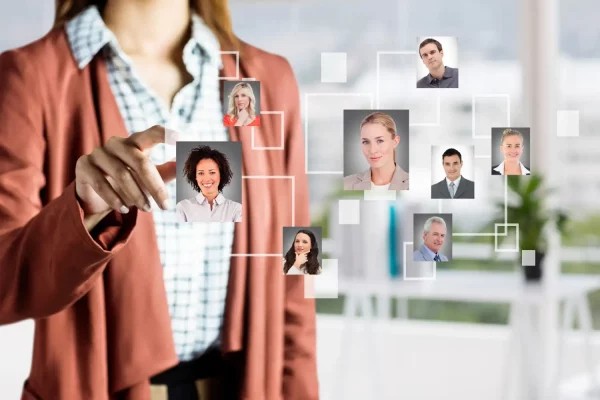
The 70 20 10 Rule for Learning and Development
Have you heard of the 10 20 70 model? This innovative educational method combines structured, social, and experiential learning to create a holistic, immersive training experience that drives real-world results. In this article, we will delve into the heart of the 70 20 10 Rule for learning and development, unveiling its transformative power and showcasing how it can redefine the landscape for training providers.

I. The Roots of the 70 20 10 Model: A Dynamic Guide for Training Excellence
The 10 20 70 rule, or 70 20 10 rule, has its roots in the field of organizational development and was popularized as a learning and development model in the 1980s. It's not so much a creation of a single person or a specific event, but rather an evolution of ideas and practices in the fields of education and professional development.
Nevertheless, the origins of the 10 20 70 rule can be traced back to the work of various scholars and practitioners who emphasized the importance of experiential and social learning. Here's a brief overview of the key milestones and individuals that contributed to the development of the 70 20 10 concept:
1. The History Behind the 10 20 70 Model
Kurt Lewin (1890-1947): The concept of experiential learning has deep roots in the work of Kurt Lewin, a psychologist who emphasized the value of learning through experiences and reflection. His work laid the foundation for the idea that learning occurs not just through formal instruction but also through personal and social experiences.
Michael M. Lombardo and Robert W. Eichinger: In the early 1980s, Lombardo and Eichinger, working at the Center for Creative Leadership, conducted research into executive development. Furthermore, their findings suggested that 70% of learning and development happens through on-the-job experiences, 20% through interactions with others, and 10% through formal education. Finally, this is often considered the first formal articulation of the 70 20 10 Rule as we know it today.
Morgan McCall, Jr.: another researcher at the Center for Creative Leadership, contributed to the model's development. He wrote about the "70/20/10 formula" in the book "The Lessons of Experience," which further popularized the concept in the field of leadership and professional development.
Charles Jennings: a learning and development expert, is also known for promoting the 70 20 10 model. Furthermore, he emphasizes the importance of social and experiential learning in his work and advocates for a more holistic approach to training and development.

2. A Game Changer in Training and Development
The 70 20 10 Rule isn't universally accepted or followed in all training and development contexts. However, it has gained recognition as a useful guideline for creating well-rounded and effective learning experiences. Since its appeal lies in its adaptability and its ability to encourage trainers and organizations to consider a broader range of learning methods beyond traditional classroom instruction.
The 10/20/70 model emphasizes that individuals acquire:
- 10% from formal learning event,
- 20% through interactions with others, such as colleagues and supervisors, and
- 70% of their knowledge through job-related experiences.
Picture a world where training transcends the confines of the classroom, where the real learning happens in the trenches of everyday experiences, and where knowledge is not just imparted but lived and breathed. Welcome to the realm of the 70 20 10 Rule — a paradigm that invites you to rethink, redesign, and rejuvenate your approach to training.
II. Understanding the 70 20 10 Rule: Transformative Insights for Training Providers
The 70 20 10 model is widely recognized for structuring and optimizing learning and development activities, particularly in a professional or workplace context. Further, it suggests that learning and development can be broken down into three main categories:
1. Experiential Learning: the 70%
The first part of the 70/20/10 rule, experiential learning, emphasizes the idea that the majority of learning occurs through hands-on experiences, challenges, and on-the-job activities. Additionally, it includes learning from mistakes, problem-solving, and applying knowledge in real-world situations. Moreover, it's often referred to as "learning by doing."
Some examples of how training providers can implement experiential learning are:
- On-the-Job Assignments: Encourage learners to take on challenging assignments that align with their learning objectives. Therefore, providing opportunities for them to apply newly acquired knowledge and skills directly in their work.
- Job Rotations: Implement job rotations or cross-training programs that expose employees to different roles and responsibilities within the organization. In order to broaden their experience base.
- Reflective Practices: Promote regular reflection and self-assessment to help learners extract meaningful insights from their experiences. Furthermore, journaling or guided reflection sessions can be beneficial.
2. Social Learning: the 20%
The second category of the 10/20/70 rule, focuses on learning from interactions and collaboration with others. It encompasses activities such as mentoring, coaching, peer feedback, team projects, and discussions. Additionally, social learning encourages individuals to share knowledge, insights, and best practices with one another.
Common examples of implementing social learning are:
- Mentoring and Coaching: Establish mentorship programs where experienced employees guide and support less-experienced colleagues. Further, formal coaching sessions can also be beneficial.
- Peer Learning: Encourage peer-to-peer learning through group discussions, knowledge-sharing sessions, and peer feedback. Also, collaborative projects can facilitate this.
- Communities of Practice: Foster communities of practice where individuals with shared interests or roles can come together to exchange ideas and best practices.
3. Formal Learning: the 10%
This final segment of the 70/20/10 rule represents structured, formal learning experiences, such as classroom training, workshops, e-learning courses, and seminars. Furthermore, these are typically designed and delivered by instructional experts and institutions.
Practical examples of formal learning activities are:
- Structured Courses: Develop structured courses or workshops that cover foundational knowledge and skills. These can be particularly valuable for technical or compliance-related topics.
- Blended Learning: Combine online courses, workshops, webinars, and e-learning modules to offer a mix of formal learning experiences.
- Self-Paced Learning: Offer self-paced learning opportunities that allow individuals to access resources and complete assignments at their own convenience.
Finally, the 70 20 10 model of learning implies that effective training programs should incorporate a balance of these three components. While formal learning (the 10%) plays a valuable role in providing foundational knowledge and structured instruction, the majority of learning and skill development occurs through experiential learning (the 70%) and social learning (the 20%).
This model is not a strict rule but a guideline that can help training providers, educators, and individuals create more holistic and effective learning experiences. Therefore, by acknowledging the importance of experiential, social, and formal learning, organizations and individuals can design more impactful and practical development programs that better align with real-world challenges and opportunities for growth.

III. Utilizing the 70/20/10 Rule in Professional Training
The 70 20 10 Rule is a groundbreaking model that can revolutionize how we approach professional training and development. Furthermore, in this section, we'll provide practical tips and strategies for making the most of this powerful framework. Whether you're a training professional or an organization looking to enhance your workforce, these steps will help you navigate the world of experiential, social, and formal learning.
1. Develop a Balanced 10 20 70 Rule Program:
As seen above, the 10 20 70 model of learning recommends educators to design courses and training programs that incorporate a balanced mix of formal learning (10%), social learning (20%), and experiential learning (70%). Furthermore, this can involve creating a curriculum that integrates on-the-job experiences, peer interactions, and structured classes.
2. Applying Formal Learning (10%):
- Develop structured courses or workshops that cover foundational knowledge and skills. These can be particularly valuable for technical or compliance-related topics.
- Create a blended learning approach by combining online courses, workshops, webinars, and e-learning modules to offer a mix of formal learning experiences.
- Provide self-paced learning opportunities that allow individuals to access resources and complete assignments at their convenience.
3. Encouraging Social Learning (20%):
- Establish mentorship programs where experienced employees guide and support less-experienced colleagues.
- Facilitate peer-to-peer learning through group discussions, knowledge-sharing sessions, and peer feedback.
- Foster communities of practice where individuals with shared interests or roles can come together to exchange ideas and best practices.

4. Adding Experiential Learning (70%):
- Encourage learners to take on challenging assignments and tasks that align with their learning objectives.
- Provide opportunities for them to apply newly acquired knowledge and skills directly in their work.
- Implement job rotations or cross-training programs to expose employees to different roles, broadening their experience base.
5. Create a Learning Culture that Fosters the 10/20/70 Model:
- Cultivate an organizational culture that values continuous learning and development. Leadership support is crucial in this endeavor.
- Recognize and reward individuals who actively participate in learning and share their knowledge with others.
- Encourage managers and leaders to serve as role models by engaging in their own professional development.
6. Utilize Technology Integrated with the 10/20/70 Rule:
- Leverage technology to support social and experiential learning. Utilize training management systems (TMS) and collaborative tools to facilitate knowledge sharing and on-the-job learning.
- Incorporate gamification elements into formal learning to enhance engagement and retention of knowledge.
- Explore virtual reality (VR) and augmented reality (AR) technologies for immersive experiential learning experiences.
7. Evaluate and Iterate:
- Regularly assess the effectiveness of your training program by gathering data on learning outcomes and employee performance.
- Use feedback from learners and trainers to make improvements and adapt the program to changing needs.
- Stay updated on industry best practices and new developments in training and development to ensure your program remains current and effective.
8. Assess Progress and Provide Feedback:
- Implement regular assessments and feedback mechanisms to track learner progress. This can help identify areas where additional support or guidance may be required.
- Provide constructive feedback on both strengths and areas for improvement, emphasizing a growth mindset.
- Use performance data and learner feedback to adapt and improve the training program continuously.
By applying these practical tips and strategies, you can create a well-rounded training and development program. Lastly, one that effectively incorporates the 70-20-10 Rule and maximizes the potential for learning and growth within your organization.

IV. Unleash the Full Potential of the 70/20/10 Model with Timely Training Management Software
As you explore the potential of the 70/20/10 model for your training programs, one fundamental consideration is the efficient management and orchestration of your educational endeavors. This is precisely where the Timely Training Management Software emerges as a valuable partner.
Certainly, Timely efficiently enhances your endeavors through its ability to facilitate the seamless promotion of training, streamline course registration processes, and foster interactive engagement. Moreover, Timely provides access to Professional Services that accelerate software implementation and adoption, accompanied by a comprehensive Help Center containing vital product documentation and instructional guides.
Allow Timely to assume the central role to bolster your progression within the framework of the 10/20/70 rule. In doing so, it has the potential to reshape training into a comprehensive, influential, and meticulously choreographed experience, benefiting both trainers and learners alike.
Get in touch with us today to elevate your training prowess with Timely LMS for Training, within the framework of the 70/20/10 model.
Table of Contents

Event Management Updates
If you want to know more Timely company and product update news, please visit our Event Management Blog. There is always something new happening at Timely, so we do our best to keep our clients on the loop!
You might also like






